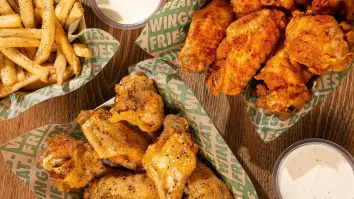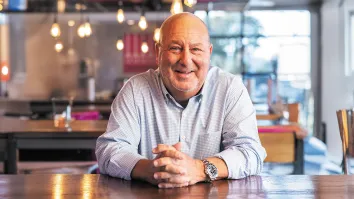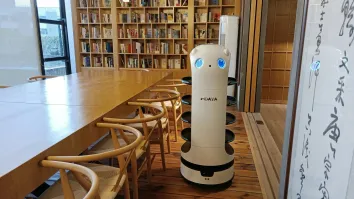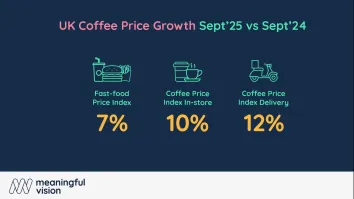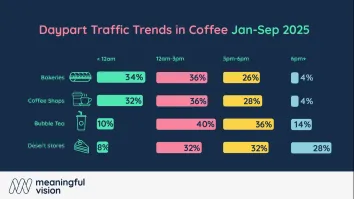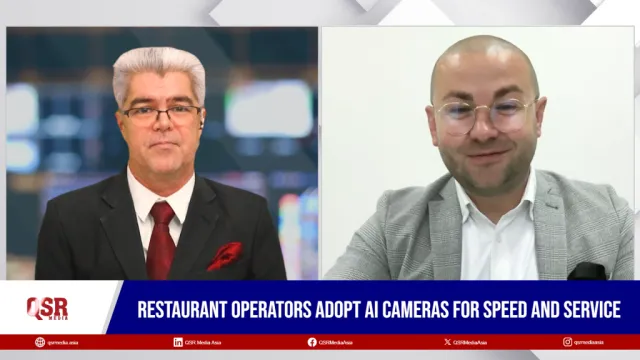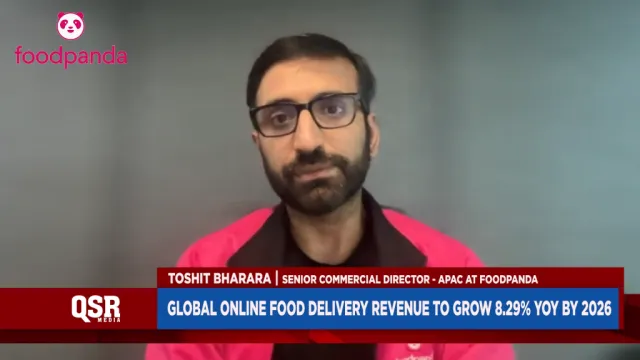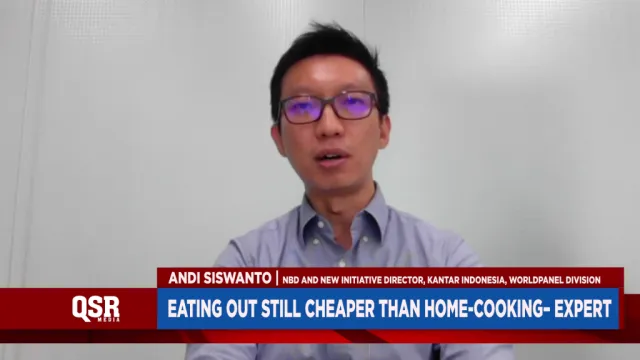
Expert sees slowing growth, rising prices, and fierce competition in the QSR market
American chicken chains have increased their presence in the UK.
Visits to quick-service restaurants dropped by 0.2% in Q1, whilst like-for-like sales fell by 2% in the same quarter, signalling tough times ahead for the industry, an expert revealed.
Ahead of the upcoming QSR Media UK Redcat Conference & Awards, Maria Vanifatova, CEO of Meaningful Vision, shared her thoughts on shifting consumer habits, intensifying competition, and the critical innovations reshaping the future of fast food.
As a thought leader in the QSR space, what do you see as the most significant shifts happening in the industry right now?
Vanifatova: There is much evidence that the market growth is slowing, which is confirmed by our data. For example, consumer traffic declined by -0.2% in Q1 2025 compared to the previous year, and like-for-like (L4L) sales fell even further, by 2%. Aside from this, there are pockets of positivity, as in any market. Three segments are performing better than others: chicken, bakery/sandwich, and coffee shops. The most significant boom is in the chicken segment, where the number of chain-owned stores has increased by 30% over the last four years. In Q1 2025 alone, the number of chicken shops rose by another 5%, and we expect even higher growth in the coming months.
More competitors are entering the space, with at least eight major North American fast food brands having entered or are planning to enter the UK market, including Dave’s Hot Chicken, Chick-fil-A, MB Chicken, Carl’s Jr., and others. Currently, local and international brands each hold roughly half the market, but international chains are expected to grow faster due to this aggressive expansion.
We are also seeing prices rise, as documented elsewhere, and consumers are increasingly price-sensitive. In March, fast food prices grew by 6% year-on-year, double the 3% increase in retail prices, which aligns more closely with the official inflation rate reported by the ONS. Price increases began ahead of April’s minimum wage and National Insurance adjustments, with many brands starting to raise prices as early as January.
Competition is intensifying: everyone is competing with everyone. The competitive landscape is becoming more complex as brands battle for a share of stagnant consumer spending.
One example is Popeyes, traditionally a chicken brand, has moved into the breakfast space, historically dominated by McDonald’s and Greggs. Meanwhile, Greggs is promoting pizza slices, encroaching on pizza chains, and Domino’s is offering wraps to compete with lunch-focused QSRs like McDonald’s, KFC, and Burger King.
So, it's no longer accurate to say "burgers compete with burgers" or "coffee shops compete with coffee shops." All fast food brands are competing with all fast food brands for the same budget, and we’re certainly seeing our clients acknowledge that wider competitive set.
Lastly, the power of promotions is growing. 2024 saw Restaurants increase the number of promotional offers by 25%, and in 2025, the growth continued. With visitor traffic stagnant and prices creeping up, we believe promotional activity will continue to intensify, be it through apps, delivery, or other channels, encouraging consumers to choose their chain.
What do you think are the most important innovations in the industry right now?
We are certainly seeing further digitalisation of marketing and promotional activities, particularly through apps, and believe this will continue as chains try to gain higher spend per transaction from their loyal customers. Also see Implementing AI technology and maximising its impact in many areas, and for the customer, that’s mostly in kiosks and drive-thru systems. Back of house, AI implementation will increase across the supply chain and site-level food management, particularly to reduce food waste, which remains a significant issue for many brands.
What challenges do you see as an immediate priority for the QSR industry?
Our clients talk to us about three core areas of focus:
Increasing operational efficiency to offset the impact of rising prices. Many chains have already acted on this and are experiencing the benefits. Retaining loyal customers while attracting new ones in an increasingly crowded market, together with increasing the average transaction value, whether this is via loyalty schemes, apps, or other channels. And offering compelling rewards-based incentives instead of excessive discounting, keeping engagement high while preserving margins
Looking forward, what trends or advancements do you believe will define the future of the QSR industry, and how are you preparing to support these changes?
Competition will continue to intensify, not only in the chicken segment. We are already seeing burrito chains and chains from other segments eyeing up the UK for their brand expansion. As a result, companies will continue to play differently in various dayparts with their menu offers and promotions, especially given the successful development of the chains mentioned earlier.
The key Trends in Promotions we’re seeing in our data include increasing use of price-linked offers, growing integration with loyalty programs, a shift toward digital promotions, and expanding presence of promotions in delivery channels.
To succeed in the UK market in today’s complex environment, where everyone is competing with everyone, chains need to be more conscious of who their competitors are.
That is exactly why having access to our granular, up-to-date competitive data is so important. It is a crucial piece of the broader insight needed to make informed decisions and spot growth opportunities.
What advice would you leave QSR brand leaders to navigate the current economic climate?
Focus on delivering smart, targeted offers to high-value customers who are willing to pay more when appropriate and to avoid over-targeting highly price-sensitive consumers who consistently seek the lowest discounts across channels.
The current economic climate demands sharper, faster decision-making. With consumer spending under pressure, success hinges on offering the right product, at the right time, in the right location, and being more relevant than the brand next door.
Tracking competitor intelligence is not optional anymore. It is essential. Understanding what your competitors are promoting, how they are pricing, where they are expanding, and how frequently they are engaging customers is key to staying competitive.


